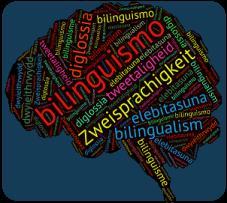DeLuca, V., Miller, D., Pliatsikas, C. and Rothman, J. (in press) Brain adaptations and neurological indices of processing in adult Second Language Acquisition: challenges for the Critical Period Hypothesis. To appear in: Schwieter, J. W. (ed.) (2019) The Handbook of the Neuroscience of Multilingualism. Wiley-Blackwell. ISBN 9781119387695
To access, email the first author Vincent De Luca (vincent.deluca[ad]pgr.reading.ac.uk), or use the contact form.
Abstract
Stemming from the seminal work of Penfield and Roberts (1959) and Lenneberg (1967), a major question in adult language learning studies—indeed one that transcends all paradigms—has involved the extent to which adult language acquisition and processing is destined to be fundamentally different in adulthood compared to childhood. The basis of the original claims of the Critical Period Hypothesis (Lenneberg, 1967) regards neurological maturation after puberty; brain plasticity is said to be lost or greatly reduced, rendering the mechanisms that underlie language learning necessarily distinct and thus disadvantaging adults. No one denies that child and adult developmental paths differ; however, the evidence that is used to support critical/sensitive period effects are decisively not clear (see e.g., Abrahamsson and Hyltenstam 2009; Long, 2005, 2013; DeKeyser, 2000 as compared to Rothman, 2008; Bialystok and Hakuta 1994; Birdsong and Molis, 2001; Birdsong and Vanhove, 2016; Birdsong, 2014 for review and opposing views). With few exceptions, the vast majority of “relevant evidence” on the matter comes from behavioral experimentation or spontaneous production, most often from L2 populations not exposed to the target language in a way similar to child L1 acquirers (e.g., adults tend to be classroom learners and children tend to be naturalistic learners). In the past two decades, technologies have progressed that permit us to have a renewed look at the Critical Period debate. That the healthy brain remains plastic throughout the lifespan is no longer controversial within neurocognitive psychology (see Fuchs and Flügge, 2014 for review). And so, the neuro-maturational basis of the Critical Period Hypothesis advocated originally in Lenneberg (1967) and assumed by many ever since is necessarily challenged. In this chapter, we focus on how neurolinguistic evidence—EEG/ERP and (f)MRI data—can help us adjudicate between various views regarding the Critical Period debate and how to best account for the ubiquitously noted differences that align with age of acquisition effects in language acquisition/processing.

